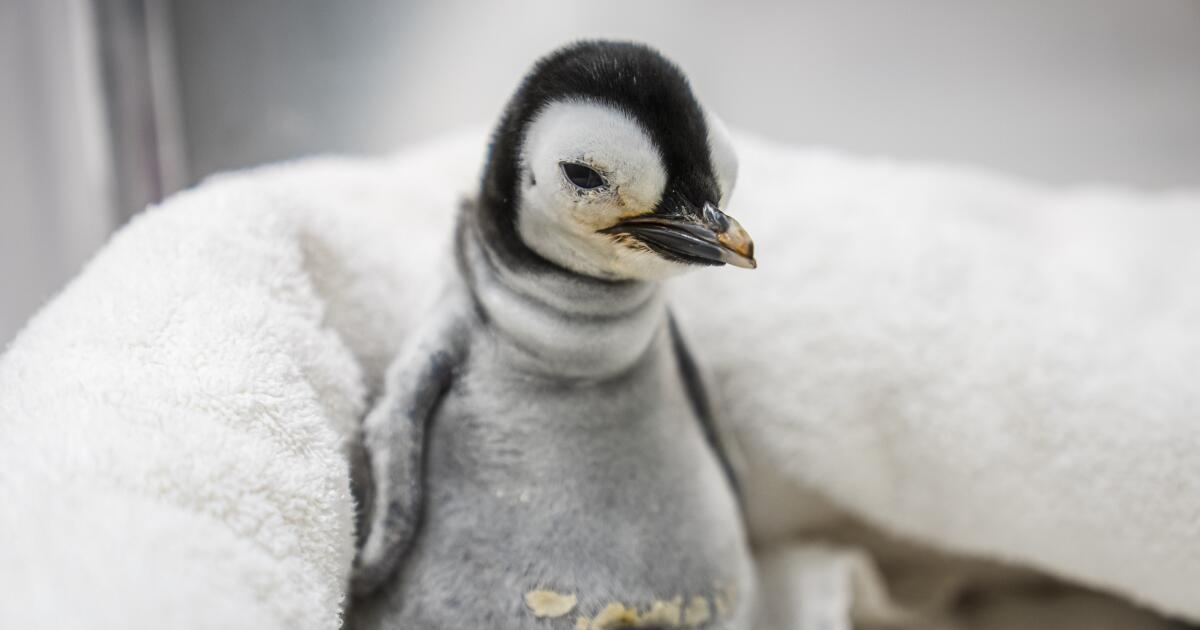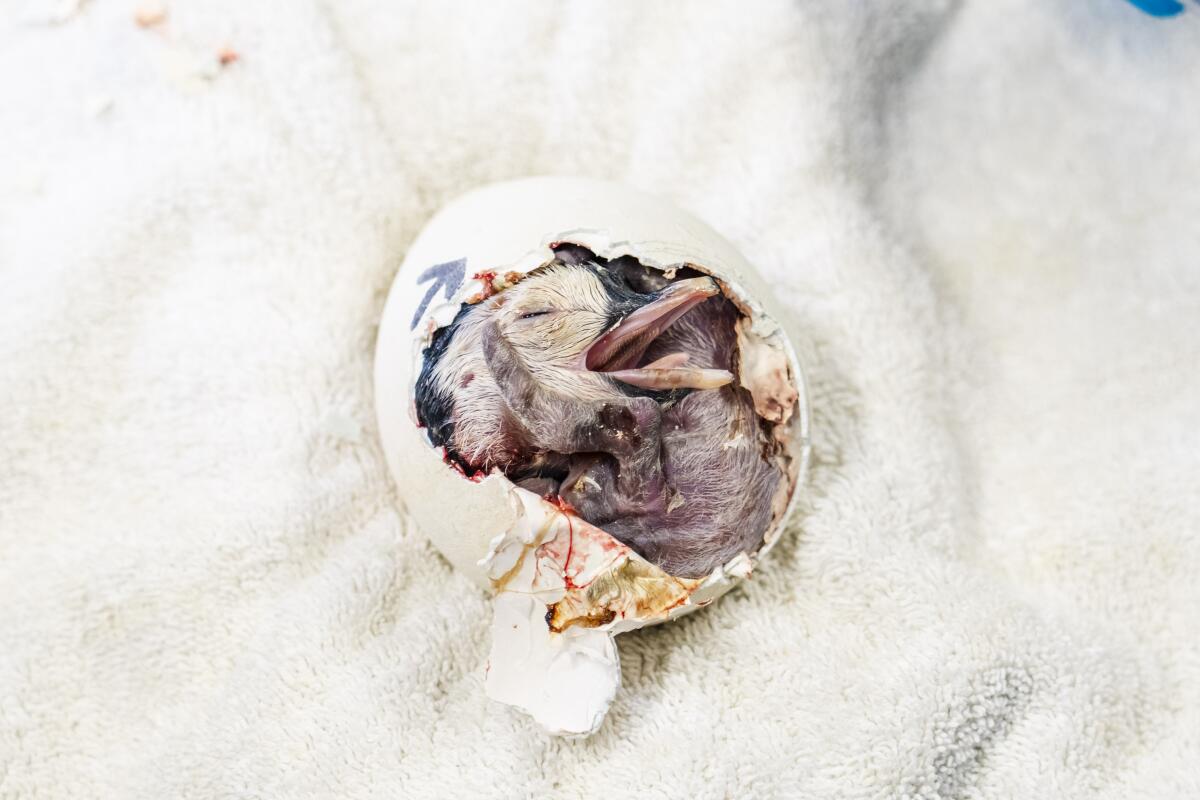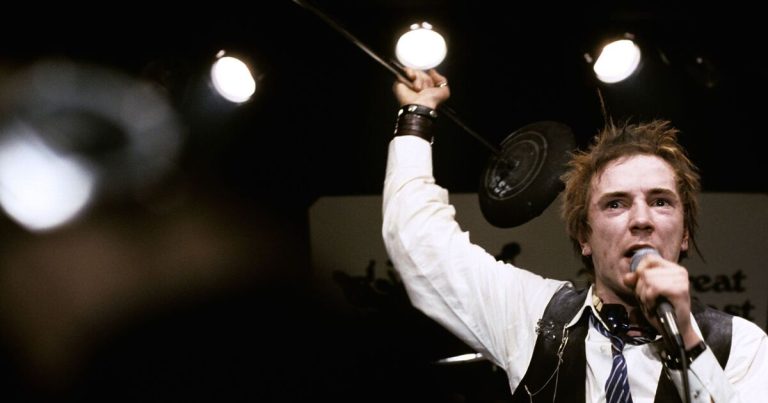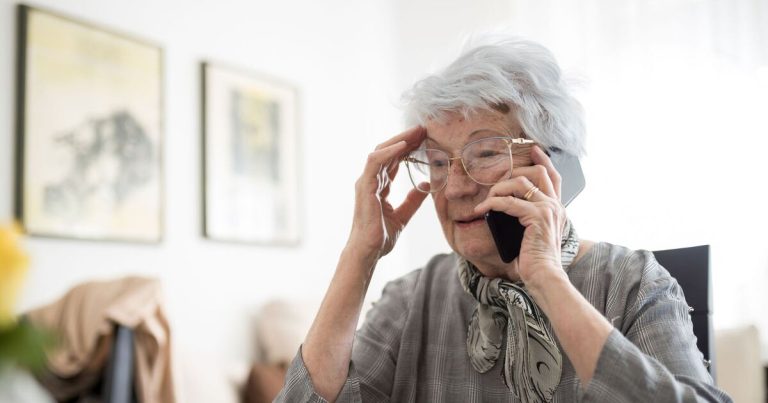
An Emperor Penguin chick hatched at SeaWorld San Diego last month has overcome long odds, becoming the first new arrival in more than a decade, the marine park announced Wednesday.
While there have been 22 other Emperor Penguin chicks hatched at SeaWorld over the last several decades, this latest chick is the first since 2010. The San Diego marine park is the only facility in the Western Hemisphere where Emperor penguins can be found. The only others, outside of Antarctica, are located in China and Japan, said Justin Brackett, Curator of Birds at SeaWorld San Diego.
SeaWorld waited for more than a month to announce the rare birth because of the physical and medical challenges the chick faced as the veterinary team worked around the clock to ensure that it would survive — and thrive, Brackett explained. The penguin egg was laid July 7, and it wasn’t until Sept. 12 that the chick was hatched, although not on its own.
Not only did SeaWorld’s veterinary team have to assist the chick in breaking through the thick shell that was its home for more than 60 days, but it also had to perform abdominal surgery on the tiny bird.
“This is a big accomplishment in terms of the coordination of our veterinary staff, and open abdominal surgery is a big deal for a tiny animal like this,” Brackett said. “She was under 24-hour care for the first month or so.”
The chick is now doing so well that it’s on track to go on exhibit at SeaWorld within three to four weeks.
But from the beginning, it was touch and go for the evolving chick. The Emperor penguin mother would normally pass the laid egg on to the father to help with incubation but that never happened, so SeaWorld had to take over that task. Once ready to hatch, the chick was able to pierce the membrane of the shell but could not break through the tough outer shell due to a beak malformation, Brackett said.

Hatching of Emperor penguin chick
(Courtesy of SeaWorld)
“So our team of zoo specialists and our veterinary team decided that assisting was the only way to safely hatch that chick,” he said. “For an Emperor penguin, that means slowly chipping pieces of the shell away, to help that chick break through. That whole process takes three days. At the end of that three-day period, we were able to hatch the chick and we have one of our first Emperor penguin babies in over a decade.”
But the chick wasn’t out of the woods yet. In the normal incubation and hatching process, much or all of the yolk of the egg eventually gets fully absorbed by the chick but that didn’t happen in this instance. As the veterinary team closely monitored the newbaby during the first crucial days after her birth, it saw that she wasn’t gaining enough weight and decided to surgically remove the yolk from the bird’s belly. Without surgery, the chick may not have survived, Brackett said.
The procedure was a success and soon the SeaWorld care team saw that the chick was eating more and progressively gaining weight. While it has not yet reached the optimal weight for its age, it is on a trajectory to do so, Brackett added.
“She’s like a preemie baby, growing at the rate she’s expected to and she will eventually catch up to the proper trajectory,” he said. “The chick is progressing normally, eating well and her weight gain is tracking properly so we feel confident with her prognosis going forward. We wish we could have been in this place weeks ago.”
While the the baby penguin will be ready soon to make her public debut, she won’t be able to get into the water for a few months more, Brackett said, because her soft down feathers are not waterproof and capable of keeping her warm in the water.






